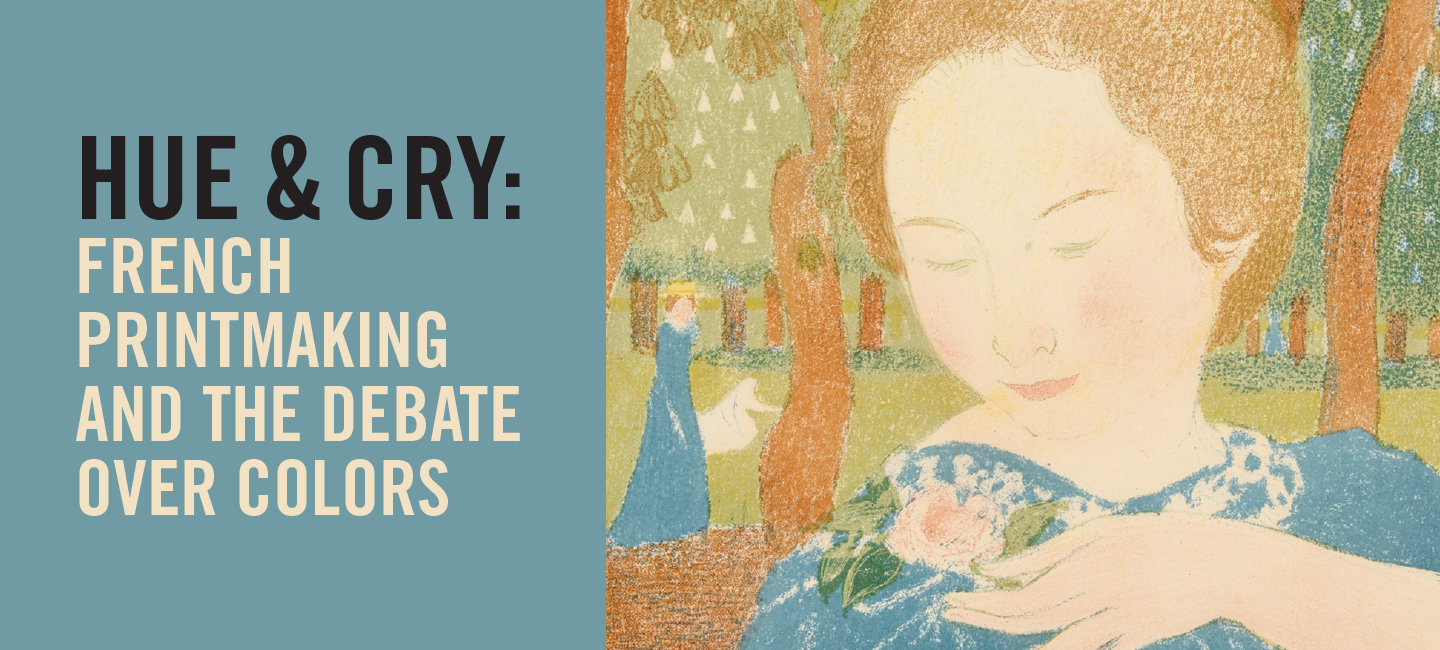DECEMBER 11, 2021–MARCH 6, 2022
ABOUT THE EXHIBITION
Brightly colored prints and posters are synonymous with Paris in the 1890s—a period known as the Belle Époque (beautiful age). Yet their extraordinary popular appeal both then and now masks the fact that, for a very long time, color in print was an outlier phenomenon. Not only was printed color difficult and expensive to achieve, it was also frowned upon as a matter of taste. Critics at the time scorned color printmaking, calling it gaudy, garish, vulgar, cheap, showy, and commercial. These negative associations discouraged the practice even after technical advances had made it more feasible and affordable. By the terms of the period, prints were understood as an art of black and white; if a print had color, it failed to qualify as fine art and had to be considered within some other classification, like illustration or advertising.
A century before the “color revolution” of the 1890s, color prints had already attained a zenith of technical perfection in France, but their popularity did not last. Extremely costly, and intimately associated with the decadence of the monarchy, these exquisite, printed confections saw both their relevance and their primary clientele disappear abruptly in the wake of the French Revolution. When color crept back into French printmaking toward the end of the nineteenth century, its reentry was eased by the example of Japanese ukiyo-e prints, then enjoying an immense vogue, and by progressive voices in the art world insisting that any means of expression chosen by an artist should be taken as legitimate. This launched a period of intense experimentation and production that spurred printmakers, seduced by the lure of color, to technically and aesthetically audacious feats. Still, color remained a problematic category: contested, controversial, and even forbidden at the Paris Salon until 1899. Ironically, the whiff of transgression may have fueled innovation: the great flowering of color printmaking waned once its fine-art status gained official acceptance.
Hue & Cry: French Printmaking and the Debate Over Colors is organized by the Clark Art Institute and curated by Anne Leonard, Manton Curator of Prints, Drawings, and Photographs.
This exhibition is made possible by Denise Littlefield Sobel.
